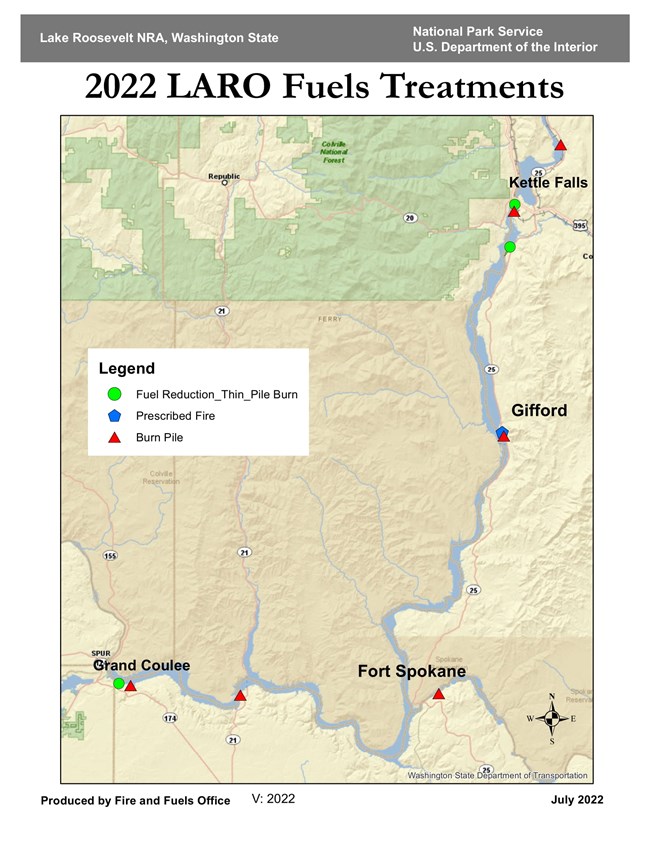Proposed ProjectsEvans AreaRickey Point For more information on health, smoke, and air quality monitoring check out these websites: 
NPS/T. Neider What We DoWildland fire management in the National Park Service is dedicated to safety, science, and resource stewardship. A safe and successful fire management program has many elements that must all work together. The NPS manages wildland fire to protect the public, communities and infrastructure, and to restore and maintain ecological health. The program manages fire based on the best scientific information and monitors programs to ensure that objectives are being met. NPS fire program managers work in coordination with other natural and resource disciplines and interagency partners to ensure that park resources and values are preserved, protected, and enhanced through the appropriate response to wildfire and the application of fuels treatments. Fuels ManagementFuels management includes both planned prescribed burns and other treatments to change or reduce wildland fuels. The fuels management program of the National Park Service has become increasingly important for reducing the risk of severe wildland fire to human communities and for maintaining or improving the health of park ecosystems. Many of the wildland areas found in NPS units are characterized as fire-adapted or fire-dependent and thus require periodic fire to maintain a healthy, resilient condition. Within these ecosystems, prescribed fire can help restore and sustain long-term environmental health. Mechanical treatments, such as thinning, mowing, and removing excessive dead vegetation, may also be implemented to reduce hazardous fuels and restore ecosystem health. Prescribed fire and mechanical treatments are used to protect park visitors, park developments, and neighboring communities from destructive wildfires by reducing the fuels that otherwise contribute to destructive wildfires. Occasionally, by-products from hazardous fuel removals are used to create biomass fuels or products. Prescribed FireThe National Park Service uses prescribed fire as a vegetation management tool in order to accomplish natural and cultural resource goals. Prescribed burns are ignited to:
Post-Fire Rehabilitation and RecoveryWhile wildfires may be beneficial and cause little damage to the land, some fires create situations that require special efforts to prevent further problems after the fire. Loss of vegetation exposes soil to erosion; runoff may increase and cause flooding, sediments may move downstream and damage houses or fill reservoirs, and put endangered species and community water supplies at risk. Post-fire programs such as Burned Area Emergency Response (BAER) addresses these situations with the goal of protecting life, property, water quality, and deteriorated ecosystems from further damage after the fire is out. 
2022 Fuel Reduction Treatments These are the proposed fuel reduction treatments for 2022, including approximate location, acreage, crew, and timing (if known). LARO Fuel Reduction Thin Pile Burn
LARO Prescribed Fire
LARO Large Burn Piles
|
Last updated: August 7, 2022
